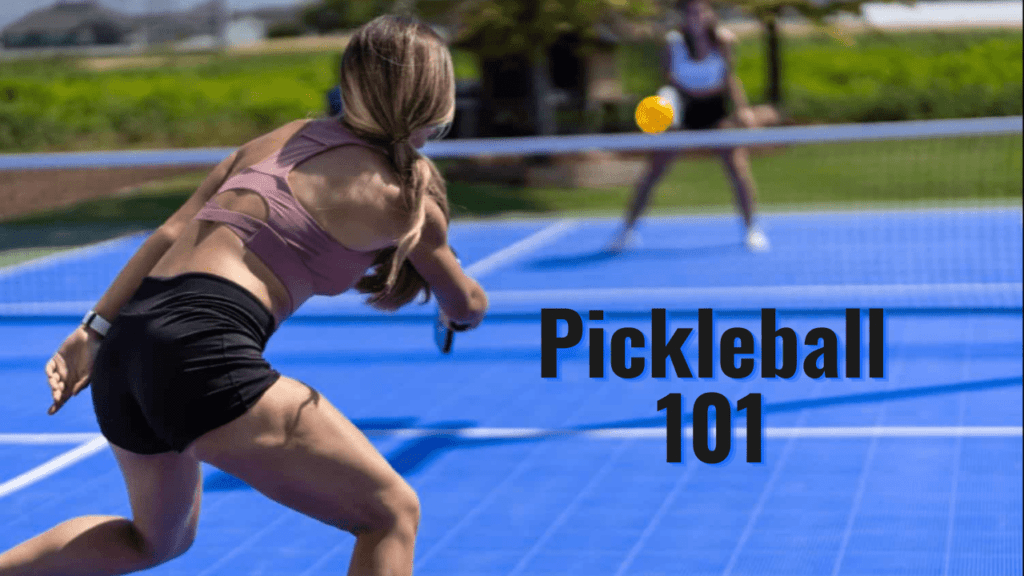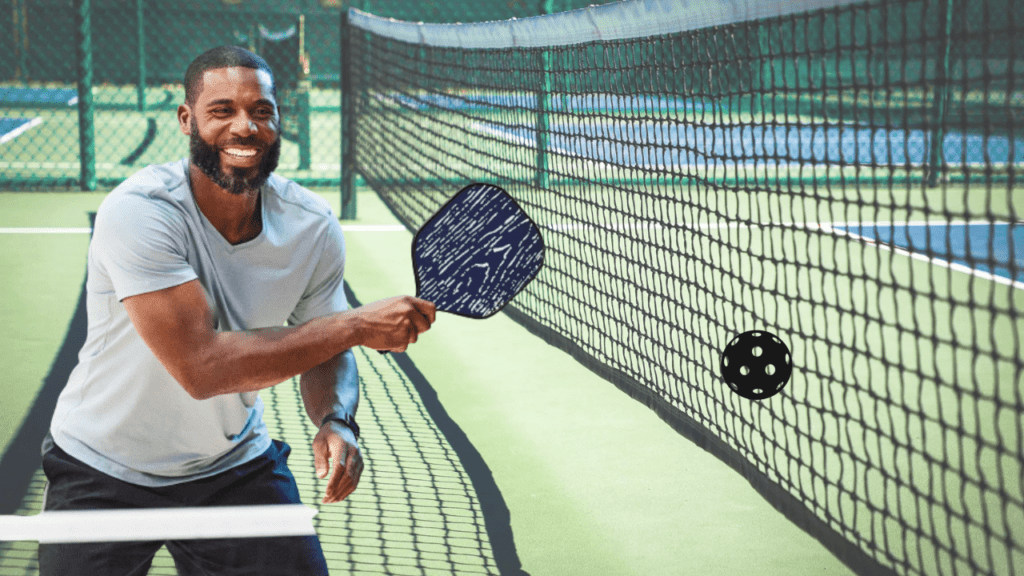Welcome to the exciting world of pickleball 101! Whether you’re a seasoned athlete or a newcomer to the world of racquet sports, pickleball offers a unique blend of fun, fitness, and social interaction. In this comprehensive guide, we’ll delve into the basics of pickleball, providing you with everything you need to know to get started and master the fundamentals.

What is Pickleball?
Pickleball is a fast-paced, paddle sport that combines elements of tennis, badminton, and ping pong. Played on a rectangular court, the game involves hitting a perforated plastic ball over a net with paddles. The rules are easy to grasp, making pickleball accessible to players of all ages and skill levels.
Pickleball 101 Equipment:
Before stepping onto the court, it’s crucial to understand the basic equipment used in pickleball. Here’s a breakdown:
- Paddles: Pickleball paddles come in a variety of materials, including wood, composite, and graphite. Beginners often start with a mid-range paddle that provides a good balance of control and power.
- Ball: The pickleball itself is unique, featuring small holes to reduce wind resistance. Outdoor balls are slightly heavier than indoor ones, so choose accordingly based on where you’ll be playing.
- Court: Pickleball courts are 20 feet wide and 44 feet long, with a 7-foot non-volley zone on either side of the net. The net height is 36 inches at the sidelines and 34 inches at the center.
The Basics of Pickleball Play:
- Serving: In pickleball, serving is underhand, and the server must stand behind the baseline. The ball must clear the net and land in the diagonal service court on the opposite side.
- Volleying: The non-volley zone, often referred to as the “kitchen,” prohibits players from volleying the ball while standing inside it. Players must wait for the ball to bounce outside the kitchen before hitting it in the air.
- Scoring: Pickleball 101 uses a rally-scoring system, meaning points can be scored by the serving or receiving team. Games are typically played to 11 points, with a winning margin of at least two points.
- Dinking: Dinking involves hitting the ball softly over the net, just clearing it, to strategically place it in the opponent’s non-volley zone. Mastering the dink is crucial for controlling the pace of the game.
Pickleball 101 Strategy:
- Communication: Pickleball is a doubles game, emphasizing teamwork and communication. Effective communication with your partner helps anticipate shots and strategically position yourselves on the court.
- Court Positioning: Knowing where to stand on the court is key to gaining a competitive edge. Players often use a stacked or side-by-side formation, depending on the situation.
- Reading Opponents: Observing your opponents’ strengths and weaknesses is essential. Adjust your strategy based on their playing style to gain a tactical advantage.
- Balancing Offense and Defense: A successful pickleball 101 strategy involves a delicate balance between offensive and defensive plays. Knowing when to attack and when to defend is crucial for success.

Pickleball 101 Etiquette:
- Respect the Kitchen: Avoiding volleys from within the non-volley zone is not just a rule; it’s a sign of sportsmanship. Stepping into the kitchen during a volley is a common mistake for beginners.
- Wait for the Score Call: The server should wait until the score is called before initiating the next serve. This ensures everyone is on the same page and ready for the next point.
- Mind Your Noise: Pickleball can get noisy, but it’s essential to keep distractions to a minimum. Refrain from loud conversations and unnecessary noise during play.
- Retrieve Balls Promptly: After a point, retrieve the ball promptly and return it to the server. This keeps the game flowing smoothly and minimizes interruptions.
FAQs
What is pickleball and how is it played?
Pickleball is a paddle sport combining tennis, badminton, and ping pong. Played on a rectangular court, players use paddles to hit a perforated plastic ball over the net. The game involves serving, volleying, and scoring points.
What equipment do I need to play pickleball?
To play pickleball, you’ll need a paddle, a perforated plastic ball, and access to a pickleball court. Paddles come in various materials, such as wood, composite, or graphite, and the ball has small holes to reduce wind resistance.
How is scoring in pickleball structured?
Pickleball uses a rally-scoring system, where points can be scored by the serving or receiving team. Games are typically played to 11 points, with a winning margin of at least two points. The server must stand behind the baseline for serving.
What is the significance of the non-volley zone in pickleball?
The non-volley zone, often called the “kitchen,” is a 7-foot area on either side of the net. Players are not allowed to volley the ball while standing inside this zone. Waiting for the ball to bounce outside the kitchen before hitting it in the air is a crucial rule.
How can I improve my pickleball strategy and skills?
To enhance your pickleball game, focus on effective communication with your partner, strategic court positioning, and observing opponents’ playing styles. Mastering the dink, a soft shot over the net is also crucial for controlling the pace of the game.
Conclusion:
In conclusion, pickleball is a dynamic and engaging sport that offers a perfect blend of exercise and social interaction. Whether you’re a beginner or looking to enhance your skills, mastering the basics outlined in this Pickleball 101 guide will set you on the path to becoming a formidable player. So, grab your paddle, head to the court, and enjoy the thrill of pickleball!



